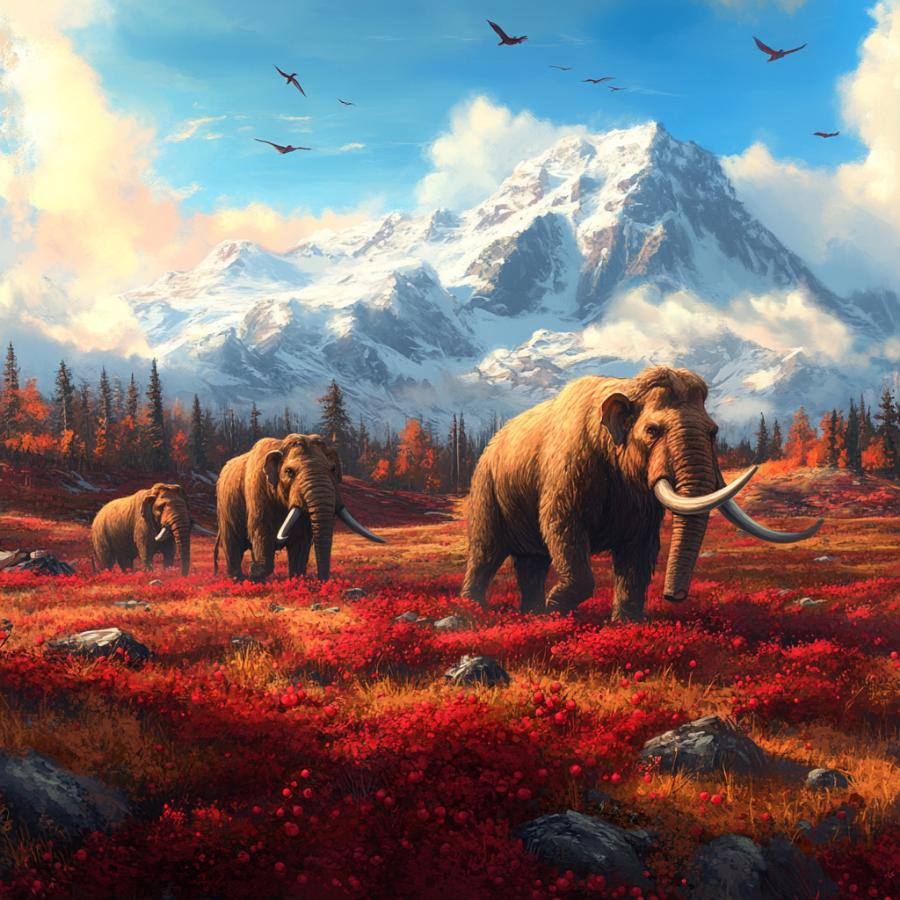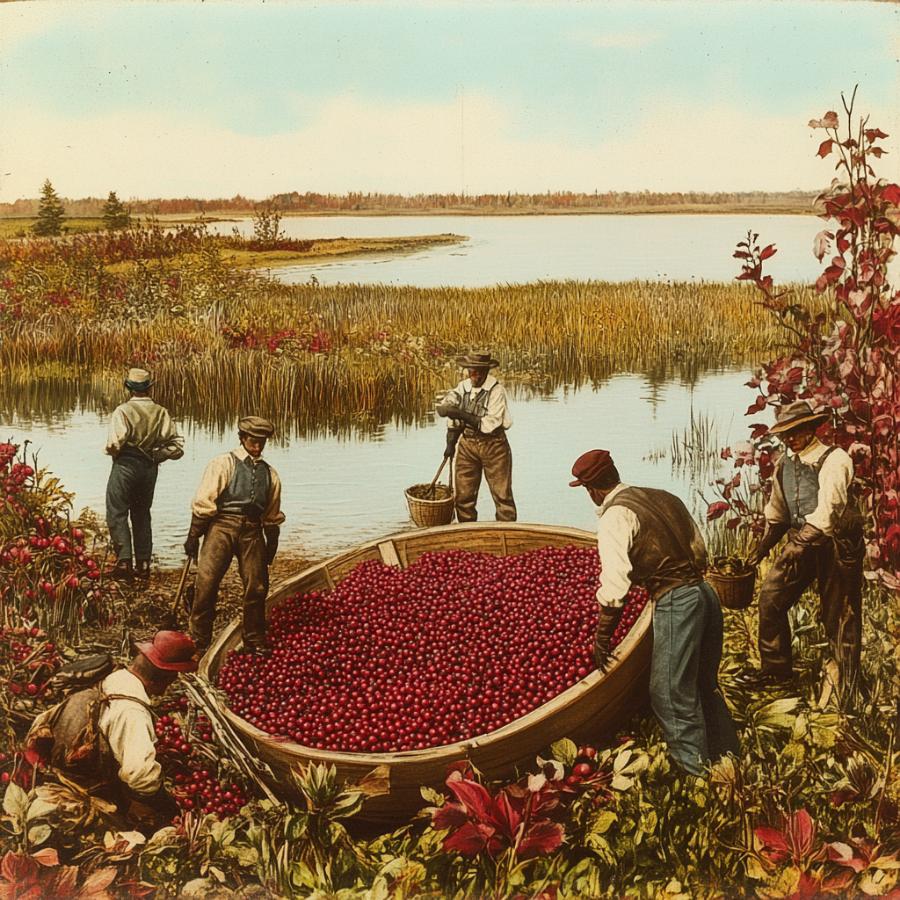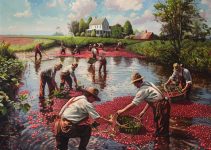
Cranberry Origins & the Great Ice Sheets of North America
…
Cranberries and the Great Ice Sheets!
Around 2.6 million years ago, Earth entered a period known as the Ice Age. During this time, massive sheets of ice, called glaciers, covered large parts of North America. These ice sheets were as thick as skyscrapers and stretched for thousands of miles. The cold was intense, and the land beneath the ice was frozen and barren. However, as the climate began to warm, these ice sheets slowly started to melt, making way for new plants and animals to thrive.
As the glaciers retreated, they left behind vast areas of wetlands, lakes, and bogs. These environments were perfect for the growth of certain plants, including cranberries. Cranberries are native to North America, and they began to emerge in these newly formed wetlands.
A Harsh Environment
Cranberries are small, evergreen vines that thrive in cold, acidic, and sandy soil. They are tough little plants that can survive in harsh conditions where many other plants can’t. The wetlands created by the melting glaciers provided the perfect habitat for cranberries to grow.
Their roots spread out wide, to anchor them in the sandy soil, and they have tiny, waxy leaves that help reduce water loss. These adaptations were essential for survival in the wet, cold bogs left behind by the immense glaciers.
After the Ice Age
As the glaciers melted and the climate warmed, the environment of North America changed drastically. The land that had once been covered in ice turned into a patchwork of forests, wetlands, and open grasslands. The newly exposed soil was nutrient-rich, thanks to the grinding action of the glaciers, which crushed rocks into fine particles.
In the wetlands, a variety of plants began to grow. Sphagnum moss, grasses, and other small shrubs joined the cranberries in these boggy areas. The wetlands were not just home to plants; they also became a vital habitat for many animals.

Cranberries got to Witness the Woolly Mammoths
…
The Flora and Fauna
The flora, or plant life, of post-Ice Age North America was diverse and rich. As the climate warmed, forests of pine, spruce, and fir trees began to spread across the land. These forests were home to a variety of animals, including large mammals like mastodons, woolly mammoths, and saber-toothed cats.
In the wetlands, the cranberry plants shared their habitat with other plants such as bog rosemary, leatherleaf, and cotton grass. These plants, like cranberries, were adapted to the acidic and waterlogged soil. The wetlands also supported a wide range of animal life. Beavers, muskrats, and otters thrived in these environments, building dams and lodges in the water. Birds like ducks, geese, and herons found plenty of food in the wetlands, including insects, fish, and small amphibians.
As the Ice Age came to an end and the glaciers fully retreated, the large mammals that once roamed the land began to disappear. However, smaller animals like deer, wolves, and bears continued to thrive in the forests and wetlands.
The Importance of Cranberries to Native Americans
Native American tribes had discovered the value of cranberries rather quickly. They used cranberries as a food source, mixing them with dried meat and fat to make a nutrient-rich food called pemmican. This food could be stored for long periods and was essential during the winter months when other food was scarce.
Native Americans also used cranberries for medicinal purposes. The berries were believed to help heal wounds and fight infections. They even used cranberry juice as a dye for clothing and blankets.

Early Cranberries in a Harsh Environment
…
European Settlers and the Growth of the Cranberry Industry
When European settlers arrived in North America in the 1600s, they quickly learned about cranberries from the Native Americans. The settlers found cranberries to be a valuable food source, especially during the harsh winters. They used cranberries in cooking, making sauces, and preserving them for future use.
Over time, settlers began to cultivate cranberries more systematically. They cleared land and created cranberry bogs, where they could grow the berries in a controlled environment. The cranberry industry began to take shape in the early 1800s, particularly in regions like New England where the climate and soil were ideal for cranberry cultivation.
By the mid-1800s, cranberries had become a significant crop in North America. Farmers developed new methods for growing and harvesting cranberries, including the use of flooding. Flooding the cranberry bogs made it easier to harvest the berries, as they would float to the surface, allowing them to be easily gathered.

Harvesting Cranberries in the 1800s
…
Today
Today, cranberries are one of the most important commercial crops in North America. They are grown primarily in states like Massachusetts, Wisconsin, and New Jersey, Washington and Oregon. Cranberries are used in a wide variety of products, including juices, sauces, and dried snacks.
Cranberries are also a symbol of the holiday season in the United States. Cranberry sauce is a traditional dish served at Thanksgiving, a holiday that celebrates the harvest and the cooperation between Native Americans and early settlers.
To Sum Up
From their almost mystical emergence in the wetlands to their importance in Native American culture and their role in the modern agricultural industry, cranberries are a testament to the resilience and spectacular creativity and power of the earth and its changes. Cranberries have survived and thrived in some of the harshest environments on Earth, becoming a beloved part of the North American landscape.
…




